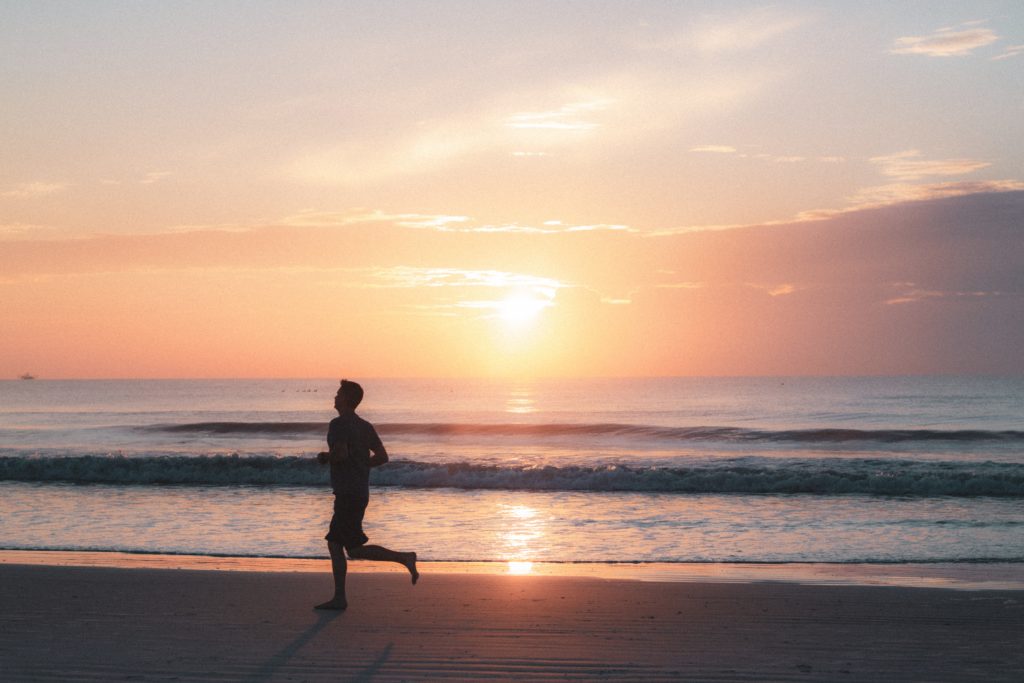Introduction
Many runners, either recreational or elite athletes have indicated that the practice of running has led them to injuries. Through research, it has been found that one of the most common recommendations for runners who keep getting muscle or tendon injuries is to stay off paved roads (harder surfaces) and hit the trails (softer surfaces). In this article, we will discuss different surfaces that can be considered a soft running surface, versus surfaces that can be considered a hard running surface. The purpose of this is to link the surfaces and the injuries that present themselves for runners that utilize different terrains. This was done in the hopes of preventing injuries and allowing readers to become more knowledgeable about the different running terrains and finding the one that will suit their needs for injury prevention and rehabilitation.
Surface Types
As most people will attest to, the practice of running can often be associated with injuries. In this article, we will discuss trails, grass, sand, as being the “soft” running surfaces; and concrete, road, gravel as being “hard” running surfaces. Previous studies have attempted to understand what injuries can result from different surfaces, utilizing a biomechanical model to determine how the leg interacts with varying surfaces encountered during a run.
Injury Types
High impact and leg stiffness during running has been linked to plantar fasciitis, tibial stress fractures and more. On average, runners who have suffered a tibial stress fracture will have stiff legs and experience higher impact forces. This will result in greater forces travelling up their shins [6]. When one lowers their leg stiffness, which can be done by running on harder surfaces, they will alleviate the stress fracture present [4].
Other injuries that have been linked to different running surfaces include overuse injuries and musculoskeletal disorders, such as sprains, strains, and more. It is also important to indicate that switching up running surfaces can lead to more injuries. This is because the individual is switching the forces that are going inside their body every time they switch surfaces [4]. When one runs on softer surfaces, then runs on harder surfaces they are creating an irregular running route.
Running Surface and Injury Prevention
Running on harder surfaces which can include gravel, concrete, indoor tracks, roads, etc., is more beneficial if an individual has a history of tibial stress fractures. Whereas running on softer surfaces such as trails, grass, sand, etc., will be more beneficial if an individual is prone to muscle and tendon injuries.
Throughout the years, individuals have been trying to understand injuries that arise from the different running surfaces. It can be as simple as a college team assessing this. It has been noted that those who run on trails in the fall and spring seemed to experience more injuries during that time in comparison to running on paved roads in the winter [5]. When one changes their running surface rapidly, they often do not see the potential harm that may arise. An individual should always condition themselves before they switch running surfaces. When a runner steps on firm concrete then switches to the soft soil, their body will automatically adjust its stride to accommodate the change. The individual’s legs will then calibrate their angle related to the ground, and the tension in their quadriceps [5]. This motion occurs before taking a step onto the new surface to maintain balance and speed during the run.
Discussion
The section below presents three studies seeking to find the correlation between running surface and injuries. These were included to allow readers to see the research that was utilized which helped create the overall conclusion on the effects of running surfaces on different injuries. The review of the studies illustrates that running surfaces can impact injuries.
Running On One Type of Surface
The results from study 1 (Ferris et al., 1999) demonstrated that runners do adjust leg stiffness for their first step on a new surface. One way to adjust leg stiffness is to adjust the torsional stiffness of the leg joints. The main finding of this study suggested that controlling the center of mass trajectory may be a general control principle for running. Leg stiffness adjustment allows the runner to maintain stability as they move from one surface to another. The basic conclusions of this study may apply to a wide range of surfaces in the natural world such as sand, snow, etc. On average those who have suffered a tibial stress factor will have stiffer legs. High impact and leg stiffness during running has been linked to plantar fasciitis, tibial stress factors, etc. When one lower their leg stiffness, this can be done by running on harder surfaces, they can alleviate the stress factor [6]. It also was noted from this study that the runner will adjust their leg stiffness unconsciously when switching surfaces. Conclusion: Therefore, maintaining one specific running surface is key. This study backed up the original theory that specific surfaces are relevant to specific injuries and switching one’s running surface for a more adequate one, for the athlete’s needs, may help with injury rehabilitation and prevention.
Running on Synthetic Rubber Surface
Study 2 (Zhang et al., 2020) examined the influence of surfaces on plantar loads among runners with habitual forefoot strike. Running on synthetic rubber showed significantly lower plantar pressure in lateral forefoot and lower pressure-time integral in central forefoot and lateral forefoot when compared to running on concrete [2]. Conclusion: This concludes that runners should choose a synthetic rubber surface to attenuate overloads on the musculoskeletal system and reduce the risk of musculoskeletal injuries in the lower extremity. This study backed up the original indication that running on a softer surface is more effective for injury rehabilitation and prevention when one is experiencing or has experienced injuries such as sprains, muscle, or tendon strains, etc.
Running on Grass
In study 3 (Tessutti et al., 2012), the researchers found that the use of grass as a compliant surface to provide a lower peak pressure in the medial region of the foot, as well as to provide better pressure distribution between the medial and lateral regions of the rearfoot, was most beneficial when compared with the other surfaces tested [3]. For study 3, they found important differences of in-shoe pressure between more compliant (natural grass) and more rigid (asphalt and concrete) surfaces during running [3]. Natural grass produced peak pressures that were up to 16% less at the rearfoot and lateral forefoot in comparison with the other running surfaces [3]. Running on natural grass attenuates in-shoe plantar pressures in recreational runners. Conclusion: If a runner controls the amount and intensity of practice, running on grass can reduce the total stress on the musculoskeletal system compared with the total musculoskeletal stress that can occur when running on more rigid surfaces like asphalt and concrete.
Conclusion
Different injuries that a runner may experience depend on the different running surfaces that they utilize. High impact and leg stiffness during running has been linked to plantar fasciitis, tibial stress fractures and more. An individual who is prone to this type of injury should execute any running movements on harder surfaces, rather than softer ones. By doing so they can alleviate any stress fracture. Whereas running on softer surfaces will aid in the rehabilitation of injuries such as sprains, muscle, or tendon strains, etc. Running on softer surfaces can reduce the total stress on the musculoskeletal system compared with the total musculoskeletal stress that can occur when running on more surfaces such as asphalt and concrete.
About the Author
My name is Christina Robert, and I am currently a 4 th year Kinesiology student attending Laurentian University. I am excited to be completing a 4-year Bachelor of Science in 3 years and will be graduating Spring of 2022. I was an elite competitive Varsity athlete ranking 2nd in Ontario and 8th in Canada.
References
[1] Study 1; Runners adjust leg stiffness for their first step on a new running surface: Ferris, D. P., Liang, K., & Farley, C. T. (1999, March 8). Runners adjust leg stif ness for their first step on a new running surface [PDF]. Berkeley: UCB Locomotion Laboratory, Department of Integrative Biology, University of California, Berkeley.
[2] Study 2; Plantar Loads of Habitual Forefoot Strikers during Running on Different Overground: Zhang, Z., Zhang, Y., & Fu, W. (2020, March 26). Plantar Loads of Habitual Forefoot Strikers during Running on Dif erent Overground Surfaces [PDF]. N.a: School of Kinesiology, Shanghai University of Sport, Shanghai 200438, China;.
[3] Study 3; Attenuation of foot pressure during running on four different surfaces: asphalt, concrete, rubber, and natural grass: Tessutti, V., Paula Ribeiro, A., Trombini-Souza A, F., & Sacco, I. C. (2012, October). Attenuation of foot pressure during running on four dif erent surfaces: Asphalt, concrete, rubber, and natural grass [PDF]. N.a: Journal of Sports Sciences.
[4] Study 4; Surface effects on ground reaction forces and lower extremity kinematics in running: Dixon, S. J., Collop, A. C., & Batt, M. E. (2000, February). Surface ef ects on ground reaction forces and lower extremity kinematics in running [PDF]. Nottingham and Exeter: MEDICINE & SCIENCE IN SPORTS & EXERCISE® Copyright © 2000 by the American College of Sports Medicine.
[5] Study 5; The effect of three surface conditions, speed and running experience on vertical acceleration of the tibia during running: Boey, H., Aeles, J., Schütte, K., & Vanwanseele, B. (2016, July 4). The effect of three surface conditions, speed and running experience on vertical acceleration of the tibia during running [PDF]. Matieland, Leuven and Eindhoven: Routledge; Taylor & Francis Group.





